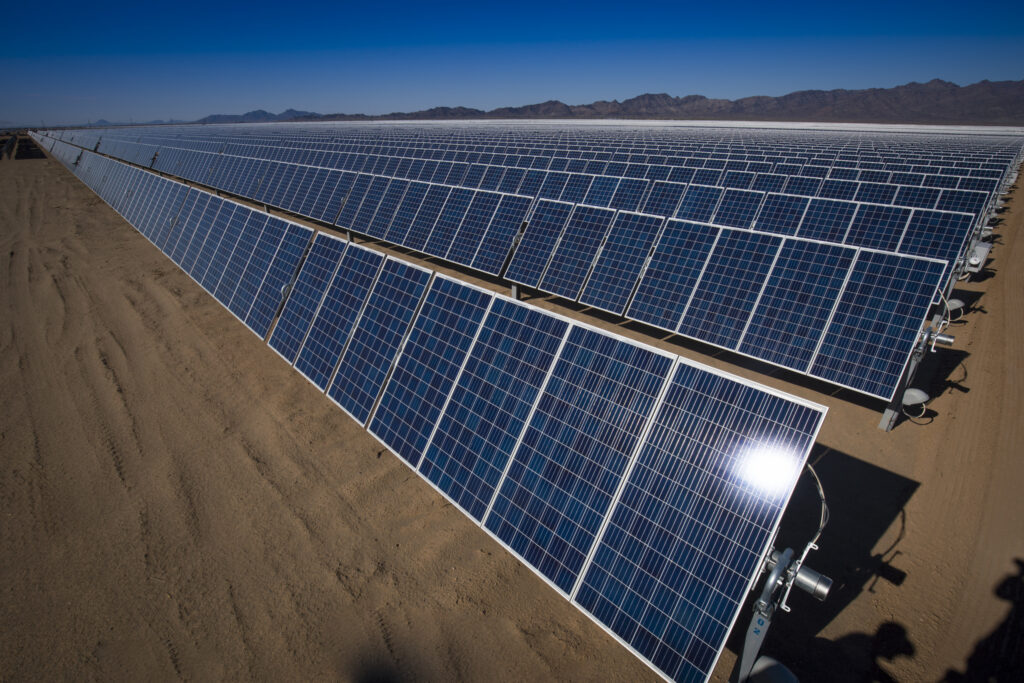
California, the most populous state, is the second largest electricity user. Only Texas, the second most populous state, uses more energy, in part because it consumes large amounts in refining fossil fuels. Overall, California uses about 8% of the electricity generated in the U.S.
Thus, it was a significant milestone when briefly, on April 3, a record 97.6% of the energy on California’s statewide grid came from renewable energy resources. (The previous record of 96.4% was set just a few days earlier).
Renewable energy’s share of the power typically peaks in the spring when mild temperatures keep demand relatively low and higher sun angles drive greater solar energy production.
On April 8, a record peak solar power production was set at 13,628 megawatts just after noon. On March 4, the state set an all-time wind generation record of 6,265 megawatts.
California now has over 15,000 MW of grid-connected solar power and 8,000 MW of wind. Another 600 MW of solar and 200 MW of wind are coming online by June. The state also has about 2,700 MW of energy storage online and that will climb to 4,000 MW by June.
In 2020, 34.5% of the state’s retail electricity sales came from wind and solar sources. Adding in hydropower and nuclear power, nearly 60% of the state’s electricity came from non-fossil fuel. Despite the effects of drought on hydropower generation and the impact of the pandemic on the pace of renewable energy projects, California continues its dramatic transition to sustainable energy.
**********
Web Links
Solar and wind notched records as renewables met California’s energy demand
Photo, posted September 20, 2016, courtesy of Tom Brewster Photography / BLM via Flickr.
Earth Wise is a production of WAMC Northeast Public Radio.
Leave a Reply